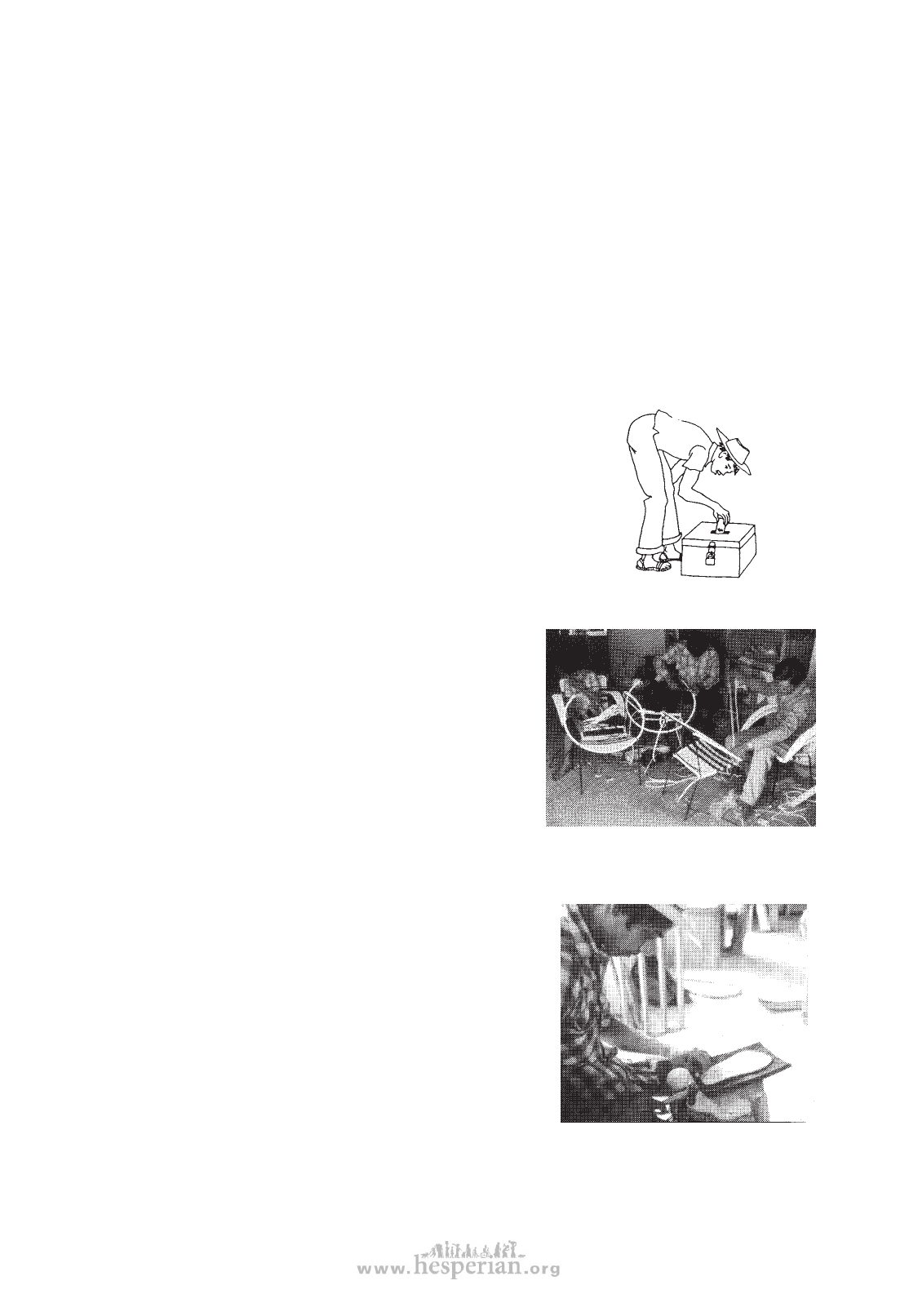
ORGANIZING A VILLAGE PROGRAM
NON-GOVERNMENT FUNDING
This can come from a variety of sources, including volunteer agencies, charitable
foundations, and religious charities. To permit greater independence, it is a good idea
to have several sources of funding. (Some government assistance may possibly be
included without sacrificing community control, if the amount is relatively small.)
In Pakistan, a religious (Islamic) law each year takes two and a half percent of the
money people have in banks, to be used by local committees for the benefit of widows,
orphans, and disabled persons. Since this law was passed in 1981, it has become a
growing source of support for community rehabilitation centers.
483
LOCAL FUNDING
It is also a good idea that a fair part of program costs—if possible at least half—be
met within the community. Possible local sources for meeting costs include:
• Fees or contributions from families served: Some
families will be able to pay more than others. Therefore,
the fee should depend on their ability to pay. When
families come from outside the community, their ability
to pay may be hard to judge. Project PROJIMO has tried
an honor system for payment of services. They ask the
family to make whatever donation they can afford. So as
not to shame the family who gives little, or make proud
the family who gives more, each family puts whatever
they can in a closed box in the corner. Only the family
knows how much they gave.
• Service ‘in kind’ or with work: The community’s
contribution does not have to be in money. People
can donate materials (sand and rock for building), do
volunteer work, or provide food and lodging. All this
reduces program costs.
• Income-producing activities: Production
of things for sale is another way to help meet
program costs. It also provides skills training for
older children and temporary workers in the program.
We will discuss this further on p. 509.
Although production of items for sale may not bring in
much money, the extra income may mean that more
disabled persons can be employed on the program
staff. They can learn rehabilitation skills and at the
same time learn income-producing skills, both of which
they may put to good use then they return to their own
village.
Some programs that are run for and by disabled persons
have succeeded in meeting a large part of their costs
through production and sale of goods. For example,
the Centre for the Rehabilitation of the Paralysed in
Bangladesh creates a wide range of orthopedic and
hospital equipment, much of which they sell to orthopedic
hospitals. (See p. 518.) The Disabled Revolutionaries
of Nicaragua has succeeded in developing a nearly
profitable business out of making low-cost, rough-terrain
wheelchairs. (See p. 519.) In Paraguay, a group of disabled
workers has also made wheelchair making a small but
profitable business.
Nobody knows how much the
individual family gives.
Weaving of chairs with plastic ribbon on a
metal frame brings in income and provides
skills training. (PROJIMO)
Sandal making produces
income and teaches a skill
for later self-employment.
(PROJIMO)
disabled village children